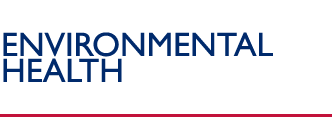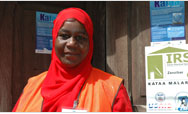Point-of-Use (POU) Water Quality
It is important to note that point-of-use (POU) water quality improvement is not intended to supplant or minimize the importance of improvements in water supply, especially quantity. The World Health Organization recently published a review of the role of water quantity in health (“Domestic water quantity, service level and health,” Guy Howard and Jamie Bartram, World Health Organization, 2003). A key concept outlined in this report is that of “access” levels, determined by both distance to water and time required to gather it. These levels, in turn, have implications for quantities of water used, ranging from less than five liters per capita per day for “no access” to 100 liters per capita per day or more for “optimal access” (multiple taps in the home). ”Basic access” which involved five to 30 minutes total collection time would be expected to result in per capita daily consumption of 20 liters.
With basic access assured, the various dimensions of hygiene, which are critical to preserving health, become more viable and will be the critical factors in reducing the risk of diarrheal disease. Indeed, there is good evidence indicating that implementation of the full package of handwashing, water supply improvements (both quantity and quality), and sanitation results in even greater health impact than any individual intervention, as much as a 65 percent reduction in diarrheal disease prevalence among young children as seen in one International Centre for Diarrhoeal Disease Research, Bangladesh (ICDDR,B) and CARE study in Bangladesh.
Prevention of Diarrhea Through Improving Hygiene Behaviors: The Sanitation and Family Education (SAFE) Pilot Project Experience [PDF, 2.3MB]
Safe Storage and Treatment of Water at Point-of-Use
Maintaining safe quality at point-of-use, typically households but also schools, health facilities, and other locations, addresses one critical dimension of hygiene improvement. It is likely that water quality improvements at the point-of-use have a positive impact on health at all levels of water supply service, and this has been consistently observed in a wide variety of settings. Water stored in the home tends to be more contaminated than water at its collection point, suggesting that substantial contamination is taking place during transport, storage, and use. Clearly, those households drawing water from communal supplies must transport water to their homes and store it. Even those households with household-level taps may have intermittent service or poor quality water. Therefore, maintenance of water quality through proper handling and storage, and if necessary, household-level disinfection, is a common concern.
Reviews published in the 1990s had suggested that water quality improvement interventions had less of an impact on diarrheal disease (accounting, according to these analyses, for roughly a 17 percent reduction) than either focused hygiene interventions (33 percent or more reduction), water quantity (27 percent reduction), or sanitation (22 percent reduction). However, more recent studies of field-level impact indicate that these earlier reviews did not focus on the quality of water at the point of use, but rather at the point of collection. This more recent evidence suggests that point-of-use water quality improvements alone result in a one-third or greater reduction in diarrheal disease morbidity, i.e. comparable to the impacts of water quantity improvements or focused hygiene improvement interventions (most notably handwashing).
Several options for ensuring safe water quality are available, including POU chlorination; combined flocculent-disinfectant packets; solar disinfection; ceramic filters; and others. The approach for which the evidence of programmatic effectiveness is most developed is point-of-use chlorination, and several USAID Missions (Madagascar, Zambia, and India) are already working on this approach. The principal method is an adaptation of the Safe Water System (SWS) developed by U.S. Centers for Disease Control and Prevention (CDC). SWS includes point-of-use chlorination with dilute hypochlorite solution, water storage in an improved vessel, and related hygiene promotion.
Measurement of health impact, mainly diarrheal disease in children, has been focused on improvements under non-epidemic conditions, i.e. the focus was not on epidemic diseases caused by fecal-oral transmission such as cholera or dysentery. Studies by CDC have consistently found an average one-half reduction in the risk of diarrheal diseases in populations using the Safe Water System when compared to populations not using improved POU treatment and storage. These studies have focused on the most vulnerable populations, including young children and people who are HIV-positive.
Point-of-use water quality interventions can be implemented rapidly and at a low cost, having substantial public health impact in a matter of months. The 2002 World Health Report from WHO highlighted point-of-use water quality interventions as consistently among the most cost-effective interventions among those water and sanitation interventions evaluated, including provision of basic water supply and sanitation infrastructure. The developing world does need water supply infrastructure, but achieving this will take years and billions of dollars. For a fraction of the cost, point-of-use water quality interventions can help protect the health of vulnerable populations while progress toward development of infrastructure is underway.
A key program feature of POU interventions to be implemented through the EH activity is the integration of messages on key hygiene behaviors as important components of the overall program. Anecdotal evidence from the field suggests that sensitizing individuals, households, and communities to the importance of water quality elevates their overall awareness of the importance of good hygiene in preserving health and improves other key behaviors, such as handwashing.
The main programmatic concerns do not, therefore, hinge on health effectiveness or even cost-effectiveness from a public health perspective. Rather, the key program concern is ensuring implementation and sustainability of the adopted approaches at a scale sufficient for significant public health impact. Current semi-commercial subsidized social marketing approaches do have drawbacks in terms of cost-recovery. For example, for chlorine disinfectant, subsidies are typically on the order of one-half to two-thirds of the direct cost of the product, while the indirect costs for social marketing and distribution are 100 percent subsidized.
Nevertheless, in terms of policy environment and stakeholder attention, the time is ripe to engage on this issue. In 2003, The World Health Organization convened a meeting of 30 organizations from a variety of sectors (including public and private sectors, NGOs, international organizations, bilateral donor agencies, and academic institutions) to establish the International Network to Promote Safe Household Water Treatment and Storage. The purposes of the Network are advocacy, setting guidelines for establishing an evidence base for new point of use technologies, disseminating information about these technologies, and fostering collaborative projects between Network member organizations. In addition, the USG has made public commitments to partnerships to advocate and implement POU approaches, at the World Summit on Sustainable Development (September 2002), the Third World Water Forum (March 2003), and at the G8 Summit (June 2003).
Materials Related to
Point-of-Use (POU) Water Quality
|


